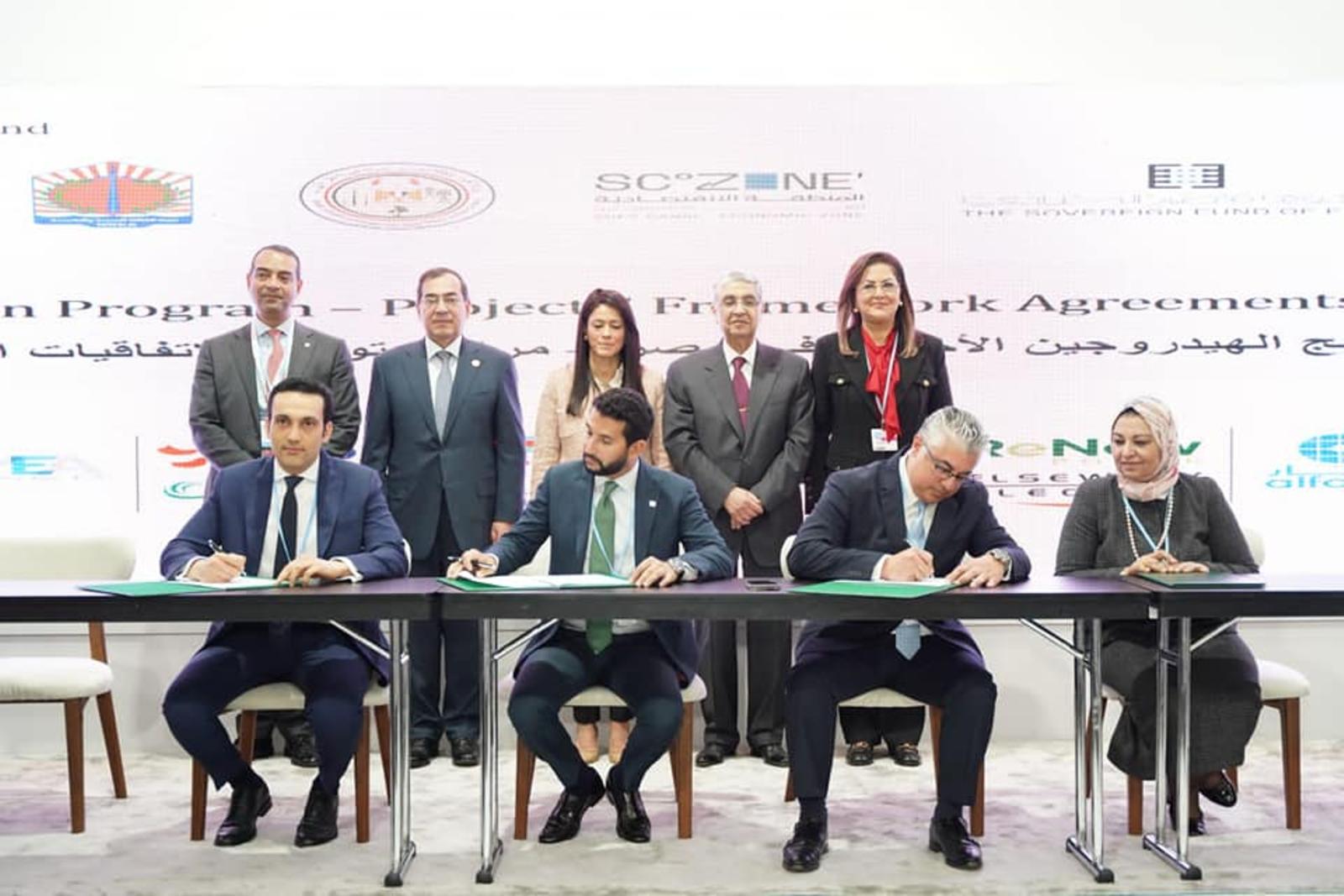A rundown of the biggest projects coming out of COP27

The MENA region is setting up to become a hub for exports of green energy and renewables, judging by the raft of new green projects that were inked at COP27. With the slogan “COP for Implementation,” COP27 host Egypt raised hopes for the number of projects announced during the summit — and it delivered.
Green hydrogen was undoubtedly the star of the show, with at least 10 new green hydrogen plants set to be built in Egypt after final agreements are inked. The nine green hydrogen and ammonia facilities in Egypt’s Suez Canal Economic Zone alone will collectively produce up to 7.6 mn tons of green ammonia and 2.7 mn tons of hydrogen a year when fully operational.
Saudi Arabia came in hot: The kingdom announced its 13 renewable energy projects worth a combined USD 9 bn in the pipeline, as it looked to reposition itself for a post-oil world. The projects — which include what could be one of the world’s largest green hydrogen plants — have a collective capacity of 11.3 GW, and will help reduce some 20 mn tons of carbon emissions a year, according to a Saudi Green Initiative tweet earlier this month.
The big question: How many of these MENA hydrogen plants will get built in the wake of the US Inflation Reduction Act, which includes a 10-year production tax credit of as much as USD 3 / kg of H2 produced with no emissions. And as we noted above, G7 nations are primed to build up hydrogen infrastructure faster than other countries, and there are clear questions about how much capacity there is in the supply chain to build out the renewable power and other infrastructure (think: electrolysers) needed to ramp up large-scale hydrogen projects.
The runner up? Wind power: At least five different wind farms will produce a whopping 29.5 GW of wind power in Egypt once fully operational. The biggest ones include Masdar alongside our friends at Infinity Power and Hassan Allam Utilities — who will build a 10 GW wind farm in Egypt — and Saudi renewable energy developer Acwa Power’s 10 GW wind farm in Egypt alongside the country’s state-owned electricity firms.
Carbon capture got some attention: Two Saudi giants — Aramco and mining company Ma’aden — agreed to build carbon capture and storage facilities in a huge step for the kingdom’s blue hydrogen ambitions. (Blue hydrogen is a form of zero-carbon fuel made through a process that captures its own carbon emissions — check out our explainer on the energy source here.) Aramco’s carbon capture hub is set to be one of the largest in the world, with the capacity to store up to 9 mn tons of carbon dioxide a year by 2027, while Ma’aden’s plant will capture 300k metric tons of CO2 emissions a year from the company’s three ammonia plants.
Waste management projects were also on the cards: UAE-headquartered waste management company Averda is partnering with US-headquartered low-carbon biofuels developer WasteFuel to establish a commercial-scale municipal waste-to-renewable-methanol plant in MENA. Egypt also announced it is set to sign contracts worth EGP 4.2 bn to establish sanitary landfills and waste recycling facilities for municipal waste. On another note, UK-based water tech company Hydro Industries is considering building two wastewater treatment facilities in Egypt to treat some 50 tons of industrial wastewater daily.